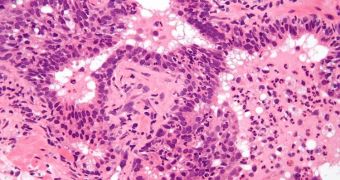In a paper published in the July 1 issue of the top scientific journal Nature Cell Biology, investigators at the University of Cambridge and the Instituto de Neurociencias, in Spain, detail a newly found mechanism for regulating cold sensation.
Scientists have known that the cold and menthol, for example, have strong analgesic effects, but the exact reason for this correlation has never been deciphered. The new work represents a significant step in the right direction.
It may soon be possible to use the results of the new work to create a series of drugs, which could be used to mimic the effects of both cold and menthol, without actually exposing patients to them.
Though feeling coolness can be painful and bothersome at times (when temperatures are excessively low), the sensation is essential for humans, and used very often. Most time, after getting burned by an open flame, people would place their hands under the tap and let cold water flow over.
This provides some temporary pain relief. Menthol is used in peppermints, mentholated cigarettes and in pain-relieving rubs precisely because it causes a similar effect. Both cooling and menthol act by activating the ion channel protein TRPM8, which allows electric charge to flow across cell membranes.
However, researchers noticed some time ago that inflammation interferes with this mechanism, rendering the effects of coolness and menthol useless for pain relief. A team lead by Dr. Xuming Zhang and professor Peter McNaughton has finally figured out why this happens.
The experts, both based at the Cambridge Department of Pharmacology, found a critical intermediate protein (Gq) that binds to TRPM8. Whenever inflammation releases histamines, the latter force Gq to switch TRPM8 off, canceling the analgesic effect.
“This novel mechanism opens up the possibility that the cold pathway could be manipulated clinically simply by disrupting the interaction of Gq protein with the TRPM8 channel,” Dr. Zhang reveals.
The new investigation was made possible through financial support from the Biotechnology and Biological Sciences Research Council (BBSRC) and the Medical Research Council (MRC).

 14 DAY TRIAL //
14 DAY TRIAL //